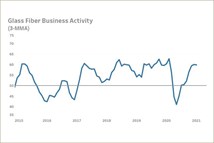Ride-Share Services Biggest Threat to Oil Market?
Saudi Aramco, the world’s largest petroleum company, believes ride-sharing is a bigger threat to near- and mid-term oil demand than electric or self-driving cars.
#economics
Saudi Aramco, the world’s largest petroleum company, believes ride-sharing is a bigger threat to near- and mid-term oil demand than electric or self-driving cars.
The company agrees with International Energy Agency forecasts that the global EV fleet will expand from 2 million vehicles today to 50 million by 2025 and almost 300 million by 2040. But IEA calculates such an increase will cut worldwide demand for oil by only 2%.
Yasser Mufti, who heads corporate planning for Saudi Aramco, tells the Financial Times he is “very confident” that overall demand for oil by the transportation sector will continue to grow for at least 20 years.
But he says ride-sharing, which is far more developed than EVs or autonomous cars, could soon have a profound impact on the energy industry—especially on fuel retailing.
Mufti points out that energy companies could shift to selling much of their fuel in bulk directly to car-share fleet operators rather than through service stations that cater to individual car owners. He adds that suppliers of petroleum-based fuels also might negotiate a portion of ride-share revenue as part of fuel supply deals.
RELATED CONTENT
-
On Headlights, Tesla's Autopilot, VW's Electric Activities and More
Seeing better when driving at night, understanding the limits of “Autopilot,” Volkswagen’s electric activities, and more.
-
On The German Auto Industry
A look at several things that are going on in the German auto industry—from new vehicles to stamping to building electric vehicles.
-
Report Forecasts Huge Economic Upside for Self-Driving EVs
Widespread adoption of autonomous electric vehicles could provide $800 billion in annual social and economic benefits in the U.S. by 2050, according to a new report.








